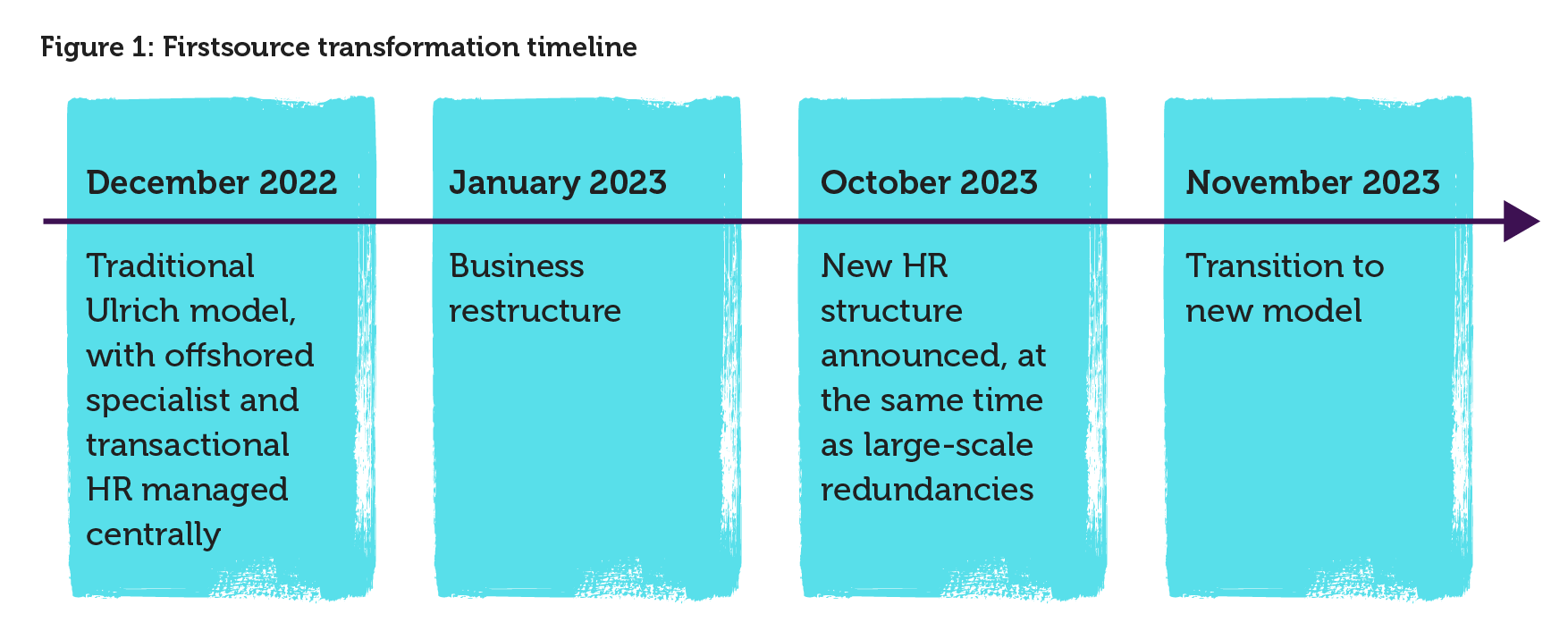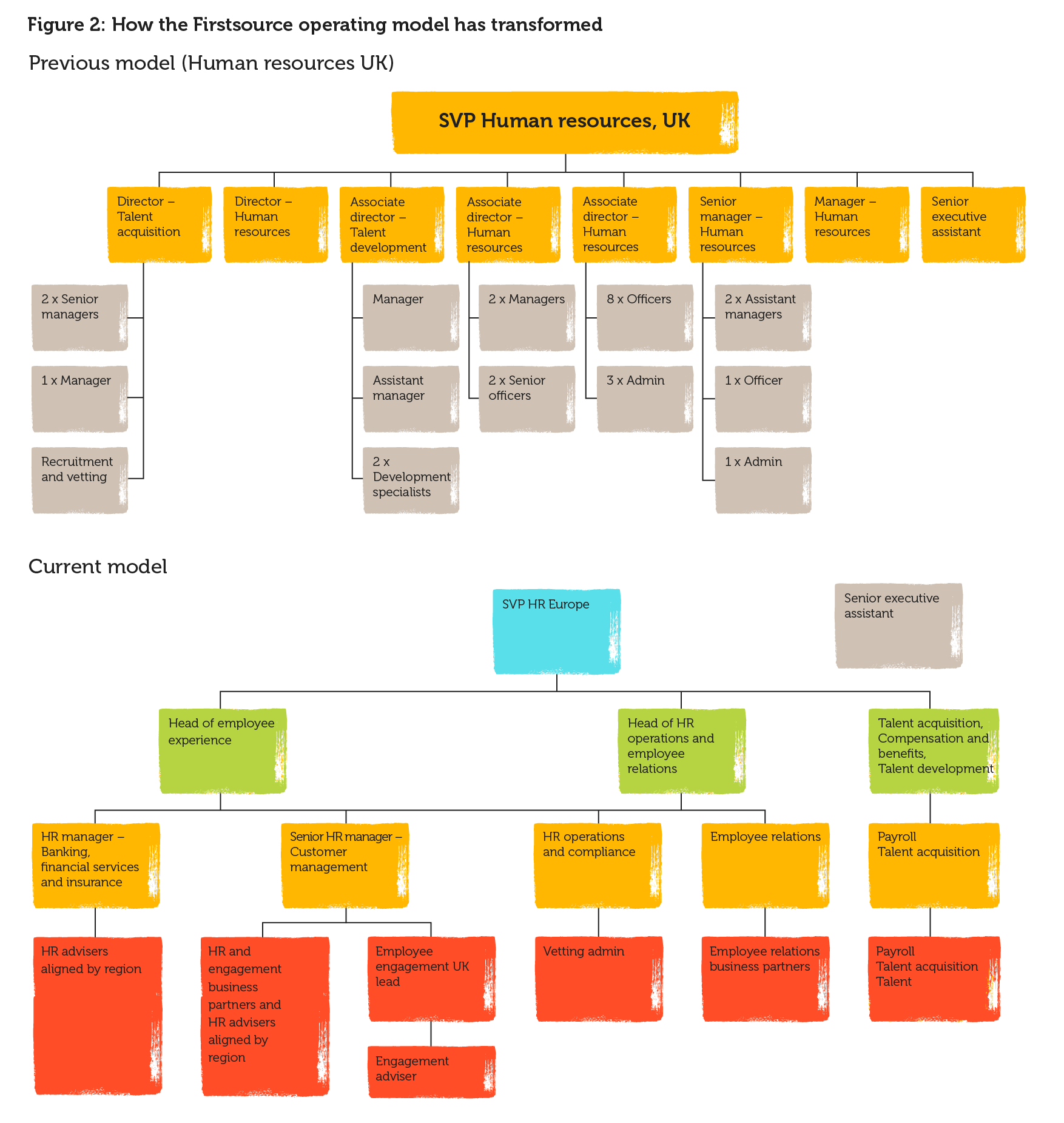Change management journey: Citizens Advice Leicestershire
How a local charity organisation adapted to change and turned crisis into sustainable growth
A case study on maturing the HR model to align to the changing needs of the business, building capability, and introducing a dedicated team focused on employee engagement

Firstsource is a business management service provider and outsourcing partner based in the UK and Northern Ireland. Established in 2001, its services include end-to-end customer management, back-office support, and tech and IT solutions. It has approximately 5,000 employees.
In 2023, Firstsource recognised that it needed to build its talent pipeline, experience and capability within the HR team. At the same time, the organisation was going through a restructure, resulting in a lower headcount. The HR function needed to adapt and transform how it was operating to better align with the business. Joanne Carlin, Senior Vice President, HR Europe at Firstsource, explains that: “The transformation was driven by a need to refocus the team to align with our client base… at that time the HR structure felt a bit disjointed from the needs of the organisation and we needed to create roles that, from an operating model perspective, fitted the new organisation as it was going to be.”
The previous, traditional model, with specialist and transactional HR being managed centrally and offshore, included HR advisers, assistant managers and managers, but no true business partners. This meant that HR activity was very transactional with little focus on strategy.
Employee relations was previously handled by external specialist advisers. However, Firstsource knew that bringing this work in-house would reduce costs and build the internal employee relations capability within the team.
The people team had other capability gaps in their talent pipeline, which meant they were unable to support the wider business growth plans. There was also a lack of data-led insight to inform the people team’s thinking.
The organisational restructure and cost reduction requirements meant that the people team needed to adapt, improve efficiency and reduce HR headcount.
A new HR operating model was built to enable more strategic work, clarify roles, address capability gaps, and ensure that the HR team was structured appropriately to align with the changing needs of the business.
It now consists of three main teams:
In addition to the structural changes above, Firstsource made other significant changes to support the new HR model:

There were several key enablers to ensure the model was implemented and embedded effectively:
A challenge has been ensuring that the HR team has confidence in the model and new working practices. This has been alleviated by:
Successes of the new model include the following:
The leadership team will review the model once a year to align with revenue plans and business strategy and assess whether the HR model is fit for purpose to support the organisational goals. As Joanne Carlin explains, operating models need to align to the changing needs of the business: “The model will change - I think you have to go into your organisation and ask what it needs, where it's trying to get to, where the growth trajectory is and where that growth is coming from. You have to build your model as such and therefore I never stick to one model.”
In terms of early success measures, Firstsource has seen a 30% reduction in attrition rates since the implementation of the new HR structure. Other metrics will be considered upon the annual review of the model.

How a local charity organisation adapted to change and turned crisis into sustainable growth

From structures to processes to people, organisations undergo frequent change, and in today’s context, often with increasing complexity. But what role can L&D play, better positioning them as operational partners of change?


Explores the purpose and evolution of job design, its role in creating good work, and assessing job quality.

Leading Voices is a series of short audio essays in which senior people professionals reflect on how they have tackled some of the profession's most pressing challenges.

Leading Voices is a series of short audio essays in which senior people professionals reflect on how they have tackled some of the profession's most pressing challenges.

Leading Voices is a series of short audio essays in which senior people professionals reflect on how they have tackled some of the profession's most pressing challenges.
How a local charity organisation adapted to change and turned crisis into sustainable growth